Can plants really help fight air pollution?
Back in 1989, NASA and the Associated Landscape Contractors of America did a Clean Air Study. They wanted to find the best ways to clean the air in space stations. Their research showed that some houseplants can naturally clean the air of toxins like formaldehyde, ammonia, benzene, and trichloroethylene.
Houseplants are beautiful, but they also have hidden talents. Some can detoxify the air around them. These plants are easy to care for and low-maintenance.
By adopting one, you get color, beauty, vibrancy, and cleaner air all in one. Even if you think you can’t keep plants alive, there is an air-cleaning plant for you.
Here are the best air-purifying plants for your home. Many are already popular houseplants.
7 Key Takeaways on the Best Air Purifying Plants
- Houseplants like Aloe Vera and Boston Fern can remove indoor pollutants such as formaldehyde and benzene. This helps improve air quality.
- NASA’s Clean Air Study found that Peace Lily and Snake Plant are great air purifiers because they absorb toxins.
- Plants do more than clean the air. They also regulate humidity levels. This helps with respiratory health.
- If you are new to houseplants, try low-maintenance options like Golden Pothos and Spider Plant. They look good and clean the air.
- Indoor air pollution comes from many sources. These include combustion, household products, and building materials.
- Plants release oxygen through photosynthesis. They also use root zone microorganisms to neutralize air pollutants.
- Adding air-purifying plants to your indoor space can boost well-being. They help reduce stress, promote better sleep, and improve your mood.
What Are the Best Air Purifying Plants?
Did you know some houseplants clean indoor air? There are 16 types perfect for your home and office. They remove toxins and help you breathe better.
1. Aloe Vera (Aloe barbadensis miller)
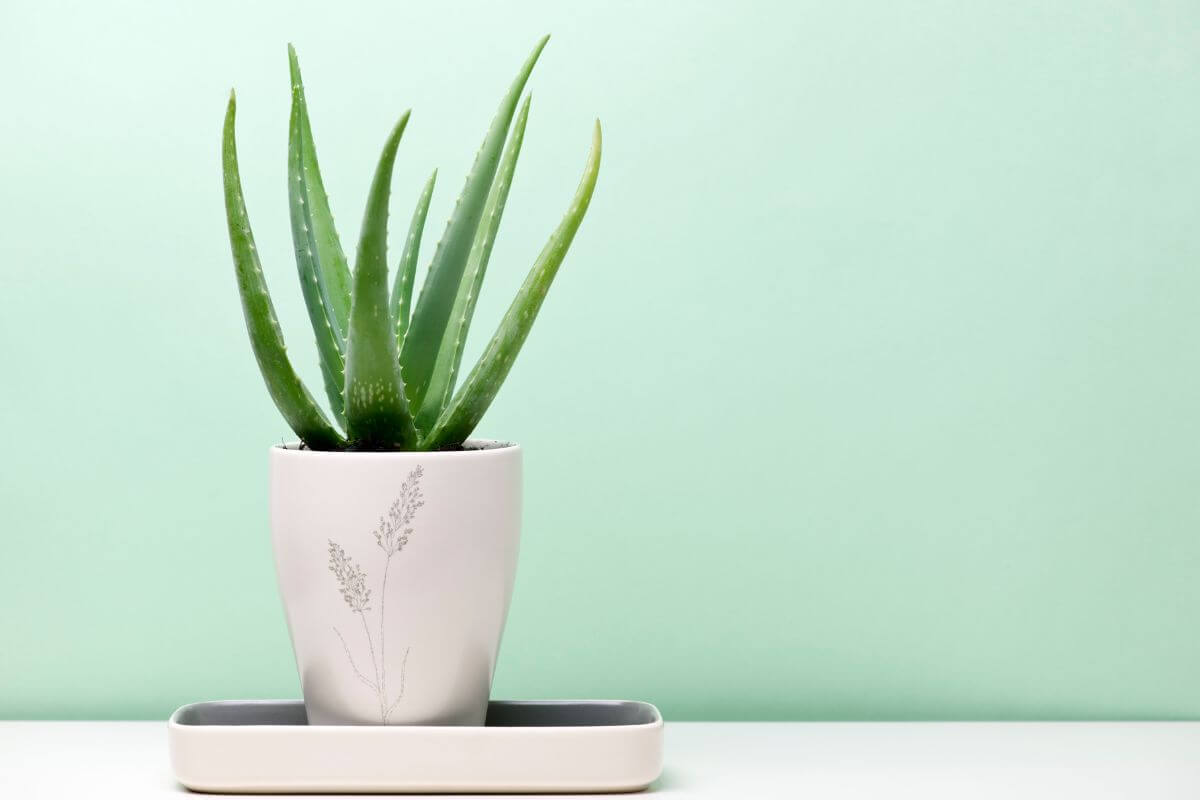
Aloe vera is a great air-purifying plant with many benefits. It removes formaldehyde and benzene. These are common indoor pollutants found in household products. Aloe vera also absorbs carbon dioxide and releases oxygen. It does this even at night, which makes it good for bedrooms.
Aloe vera is a low-maintenance succulent. It is perfect for beginners or those with busy lives. Besides cleaning the air, it soothes sunburns.
- Learn more about Aloe Vera Gardening
2. Boston Fern (Nephrolepsis exaltata)
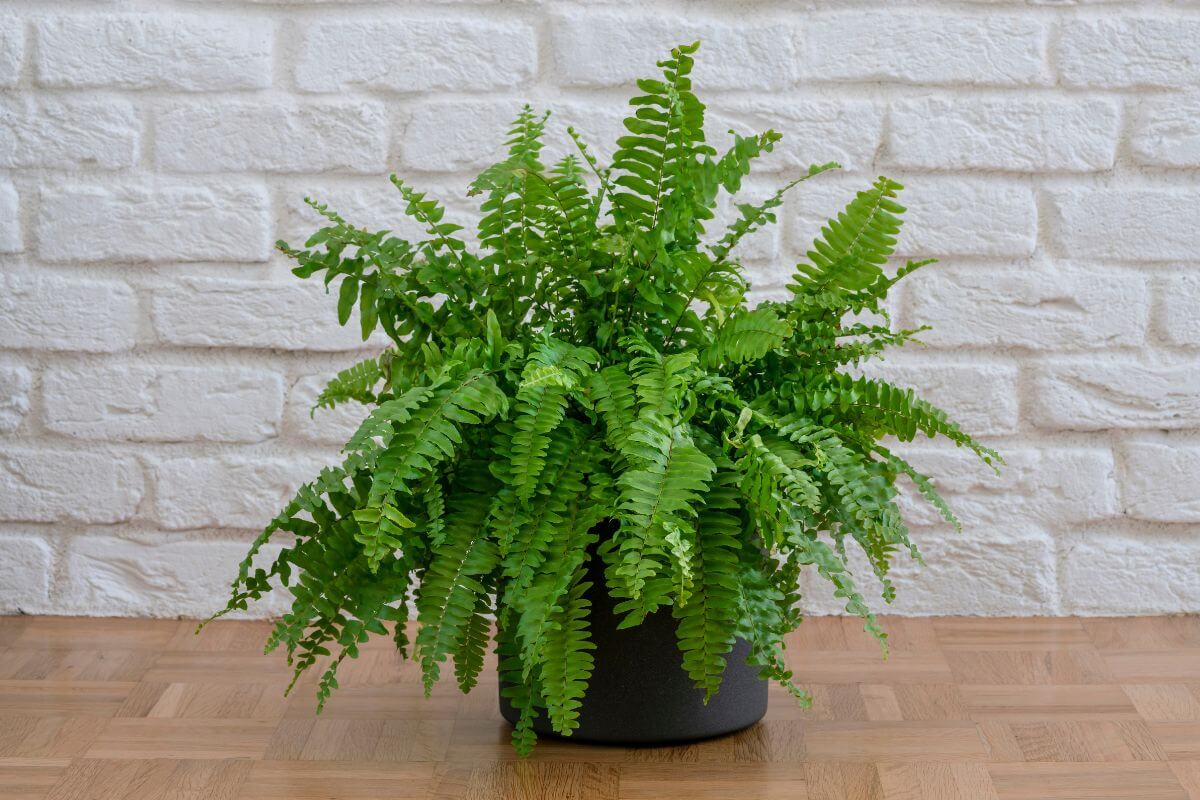
The Boston Fern is a fantastic air-purifying plant with many benefits. It removes indoor pollutants like formaldehyde, xylene, and toluene found in household items.
Boston Ferns work as natural humidifiers. They increase humidity, which helps respiratory health, especially in dry conditions. They also absorb carbon dioxide and release oxygen to improve air quality.
You can grow these ferns indoors and outdoors. They adapt well to different environments. They are popular as hanging plants because they add tropical elegance to spaces. Boston Ferns are easy to care for. They prefer indirect sunlight, well-drained soil, and regular watering.
By improving air quality, Boston Ferns can help you sleep better, reduce stress, and boost your well-being. Place them in high-humidity areas like bathrooms or kitchens for the best results.
3. Bromeliad Plant (Bromeliaceae)
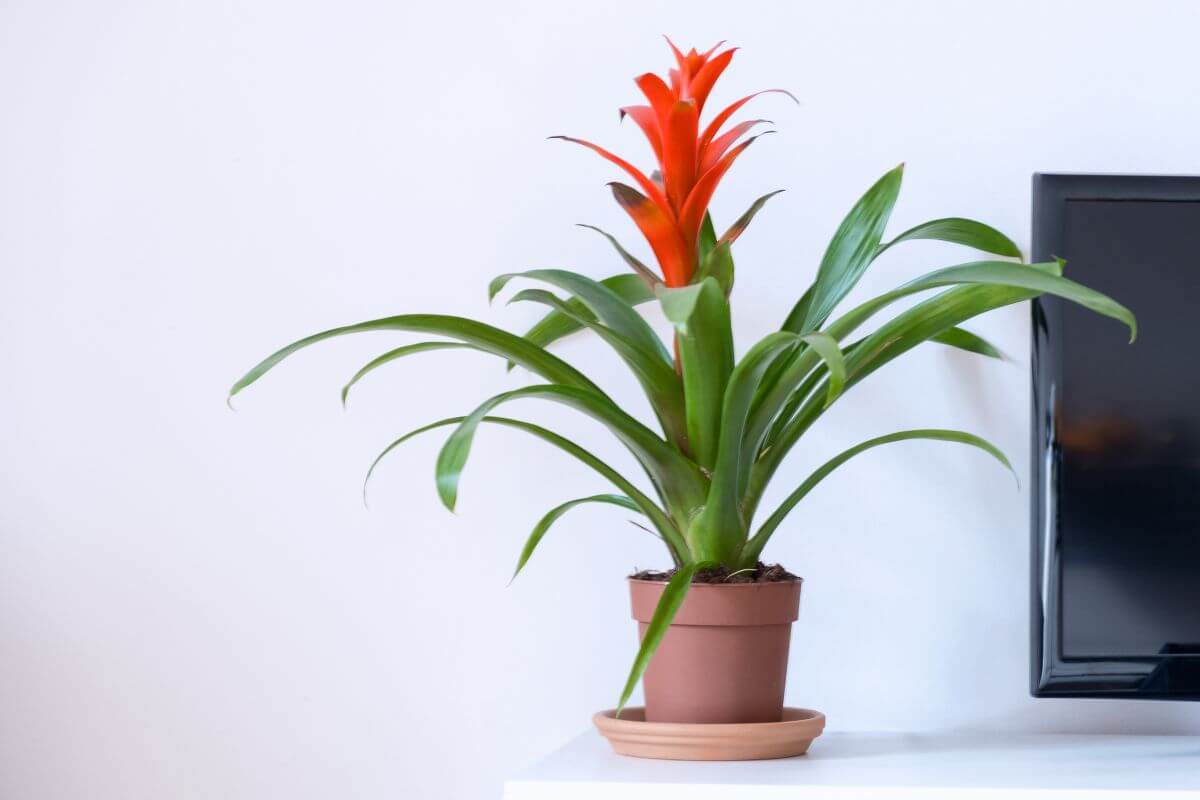
Bromeliad plants are great for purifying the air. They remove common indoor pollutants and improve air quality. These plants are a top choice for indoor spaces because they clean the air so well.
Bromeliads release oxygen and filter pollutants at night. This makes them perfect for bedrooms. They come in many species like the popular pineapple plant which adds an exotic touch to your home.
These plants are easy to care for. They are perfect for beginners or those with busy lives. Bromeliads have colorful leaves and unique flowers. They also boost humidity which is good for your respiratory health.
4. Chinese Evergreen (Aglaonema modestum)
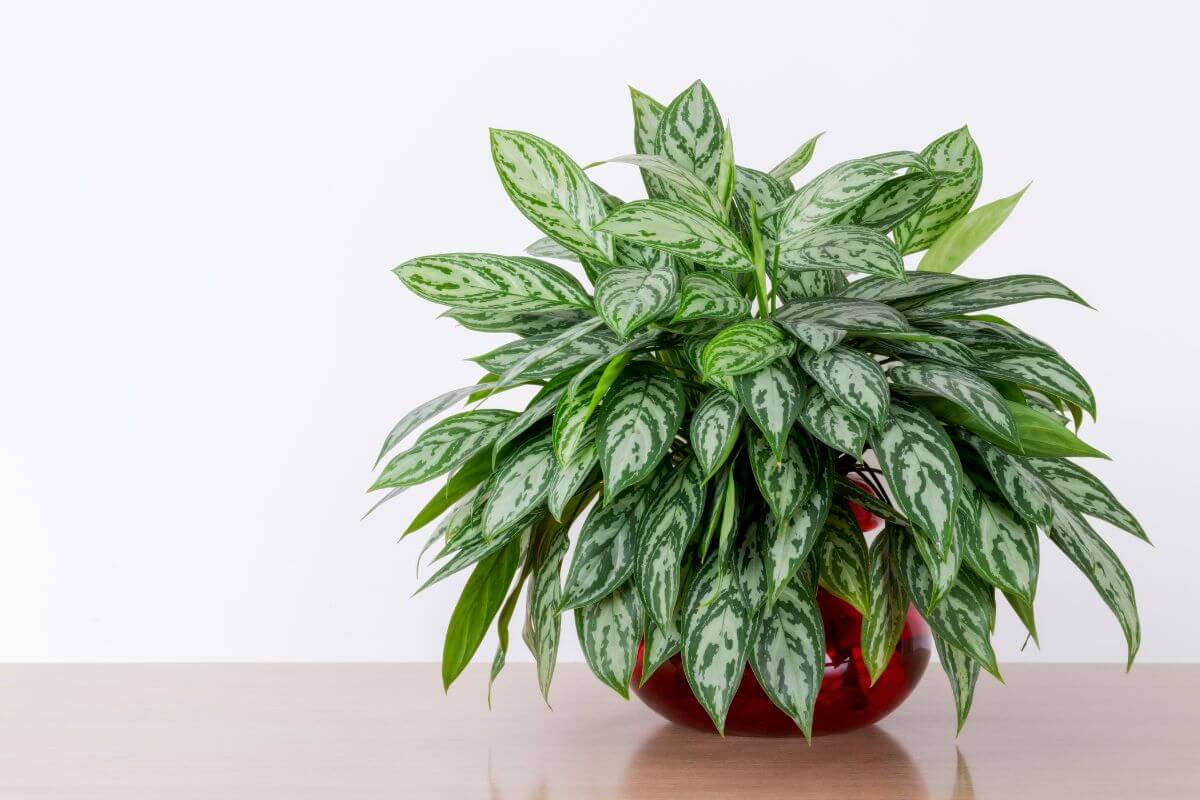
The Chinese Evergreen is a great plant for cleaning the air in your home. It removes toxins like benzene, formaldehyde, and trichloroethylene.
These plants are tough. They are perfect if you are new to plants or have a busy life. They come in many colors, making them a nice addition to your home decor while they clean the air.
Chinese Evergreens do well in low to bright indirect light. They fit in different indoor settings. Since they are tropical plants, they can boost humidity in dry rooms. This helps with respiratory health.
5. Dragon Tree (Dracaena draco)
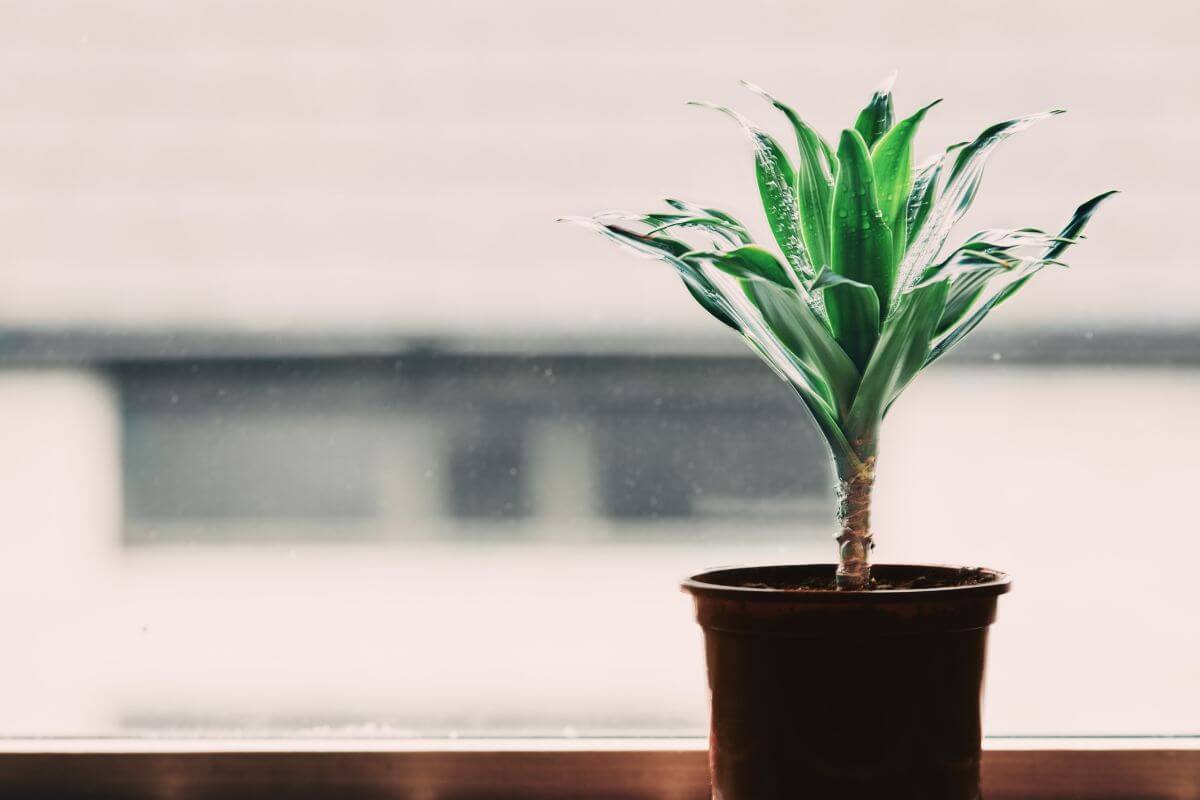
The Dragon Tree is a top choice for improving indoor air. It removes pollutants like formaldehyde, benzene, trichloroethylene, and xylene from your home.
Dragon Trees are tough. They can survive almost anything, making them perfect for beginners or busy offices. They grow in low to bright indirect light.
Their spiky, variegated leaves and bamboo-like canes make them visually appealing. Some can grow 6-10 feet tall indoors, fitting various spaces.
NASA’s study on air-cleaning plants included Dragon Trees. The study confirmed their ability to purify indoor air.
6. English Ivy (Hedera helix)
English Ivy is a great plant for cleaning the air. It removes indoor pollutants like formaldehyde, benzene, xylene, and trichloroethylene. NASA even confirmed its air-purifying abilities.
You can grow English Ivy indoors or outdoors. It adapts well to different environments. Many people like it as a hanging plant or trained to climb structures. It adds visual interest to any space.
English Ivy is a tropical plant. It helps increase humidity in dry rooms. This can be good for your respiratory health. Besides cleaning the air, it may reduce airborne mold and allergens. This can also help with respiratory issues.
7. Peace Lily (Spathiphyllum)
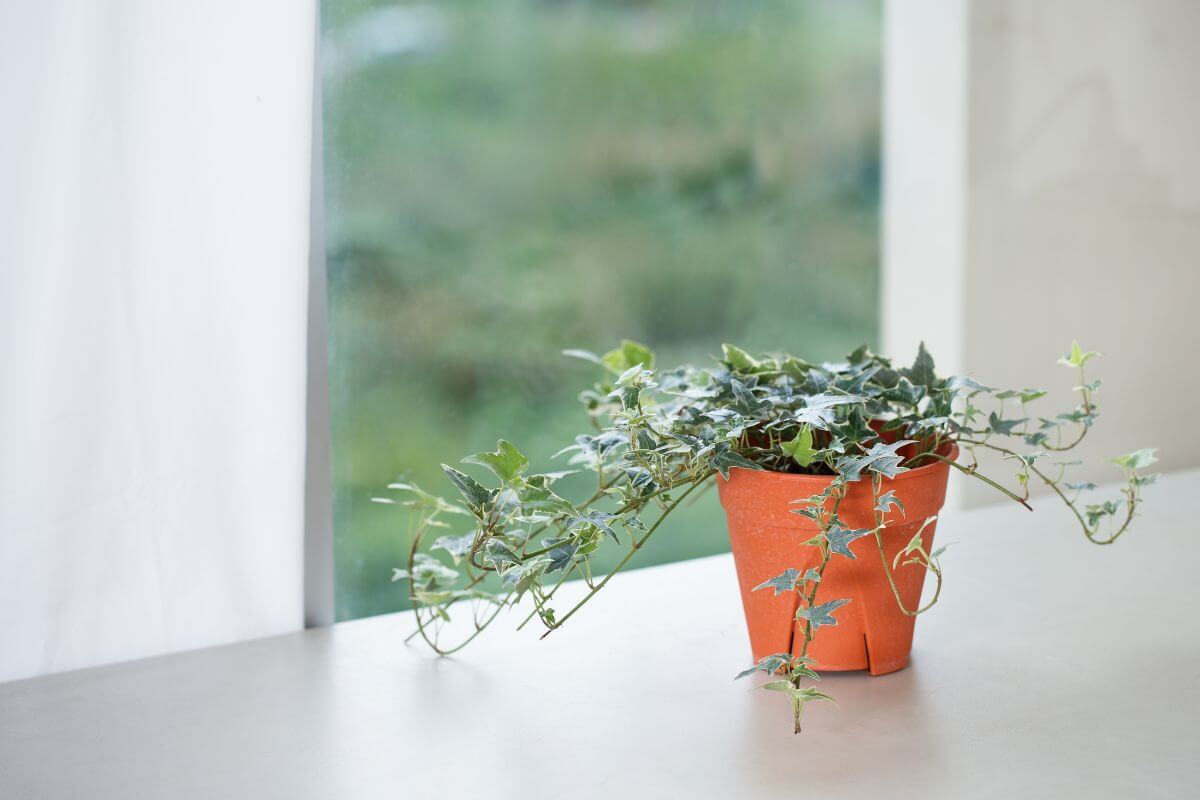
The Peace Lily stands out for its ability to clean the air. It removes indoor pollutants like benzene, formaldehyde, ethylene, and ammonia. NASA even lists it among the top 10 air-cleaning plants. This plant also fights mildew and absorbs mold spores, making it great for humid spots like bathrooms.
Peace Lilies are perfect for beginners because they are low-maintenance. They thrive in low light but prefer medium to bright filtered light. With their glossy green leaves and elegant white flowers, they add a tropical and sophisticated touch to any space.
8. Golden Pothos (Epipremnum aureum)
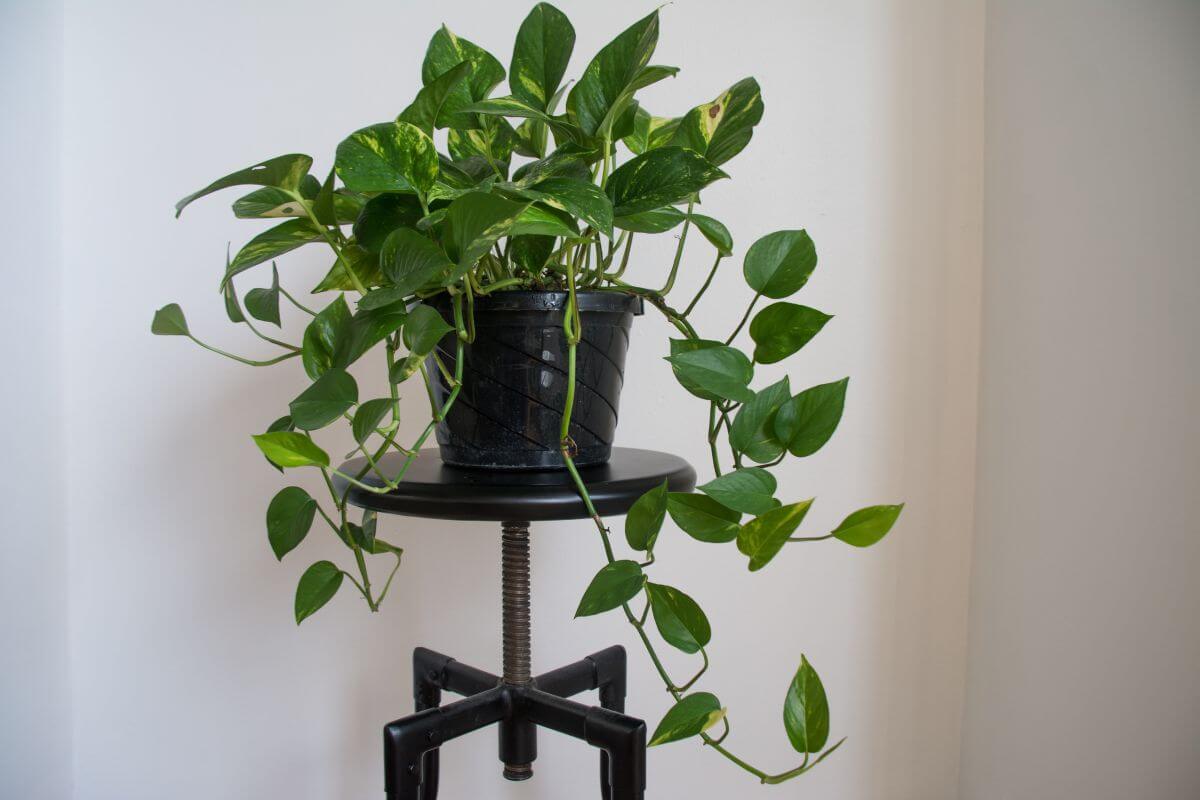
Golden Pothos is a top plant for purifying air. NASA’s Clean Air Study highlights its ability to remove indoor pollutants like formaldehyde, benzene, xylene, and carbon monoxide.
You don’t need to fuss over it much. It thrives in different light conditions and doesn’t need frequent watering. You can grow it as a trailing vine or train it to climb. It works well in hanging baskets, on shelves, or trellises.
Its fast growth improves air quality and adds beauty to your space. The heart-shaped leaves and golden variegation reduce stress and promote well-being indoors.
9. Rubber Tree (Ficus elastic)
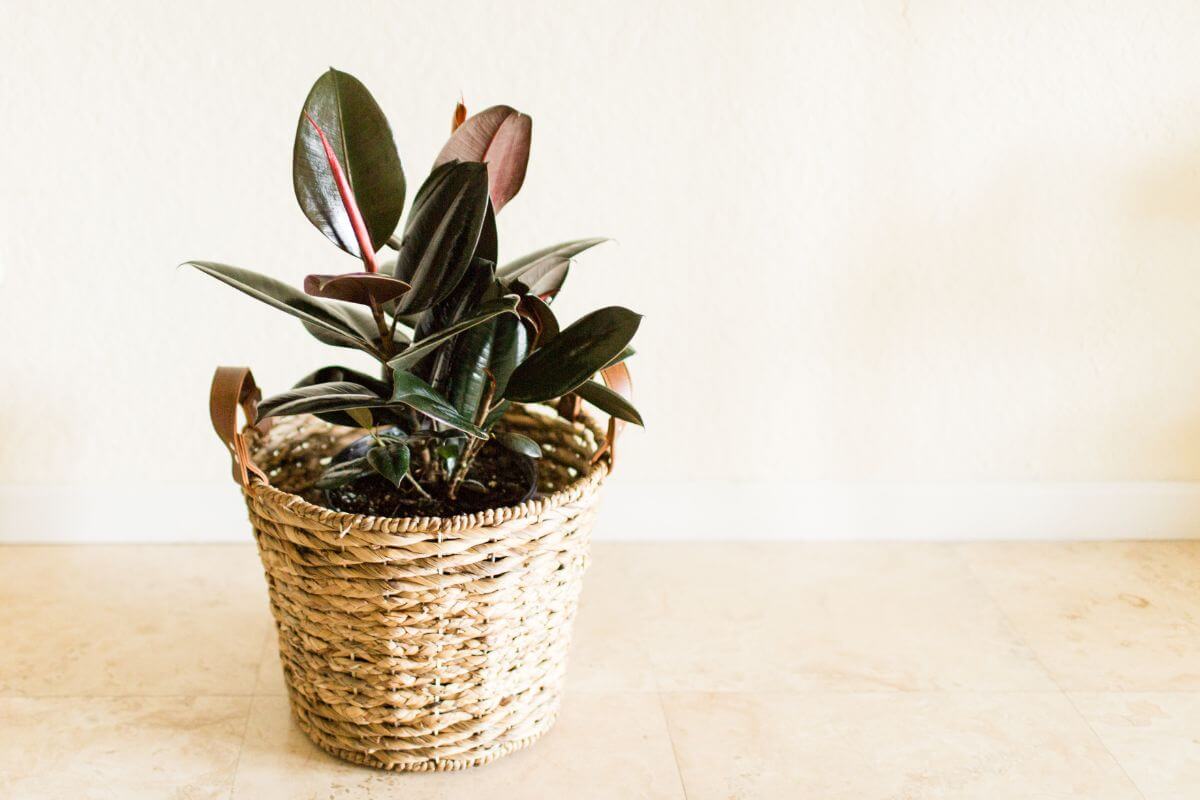
Rubber Trees are great for cleaning the air. They remove pollutants like formaldehyde, xylene, benzene, and trichloroethylene. Their big, shiny leaves give them lots of surface area to clean the air well.
Rubber plants are easy to care for. They’re perfect if you’re new to plants or have a busy life. They grow well in low light and don’t need much water. This makes them perfect for many indoor spaces.
Their tropical look and shiny, broad leaves make them beautiful. Rubber plants can fit any decor. You can keep them small on a table or let them grow big on the floor. They adapt to your space and style.
10. Snake Plant – Variegated Sanseviera (Sansevieria trifasciata ‘Laurentii’)
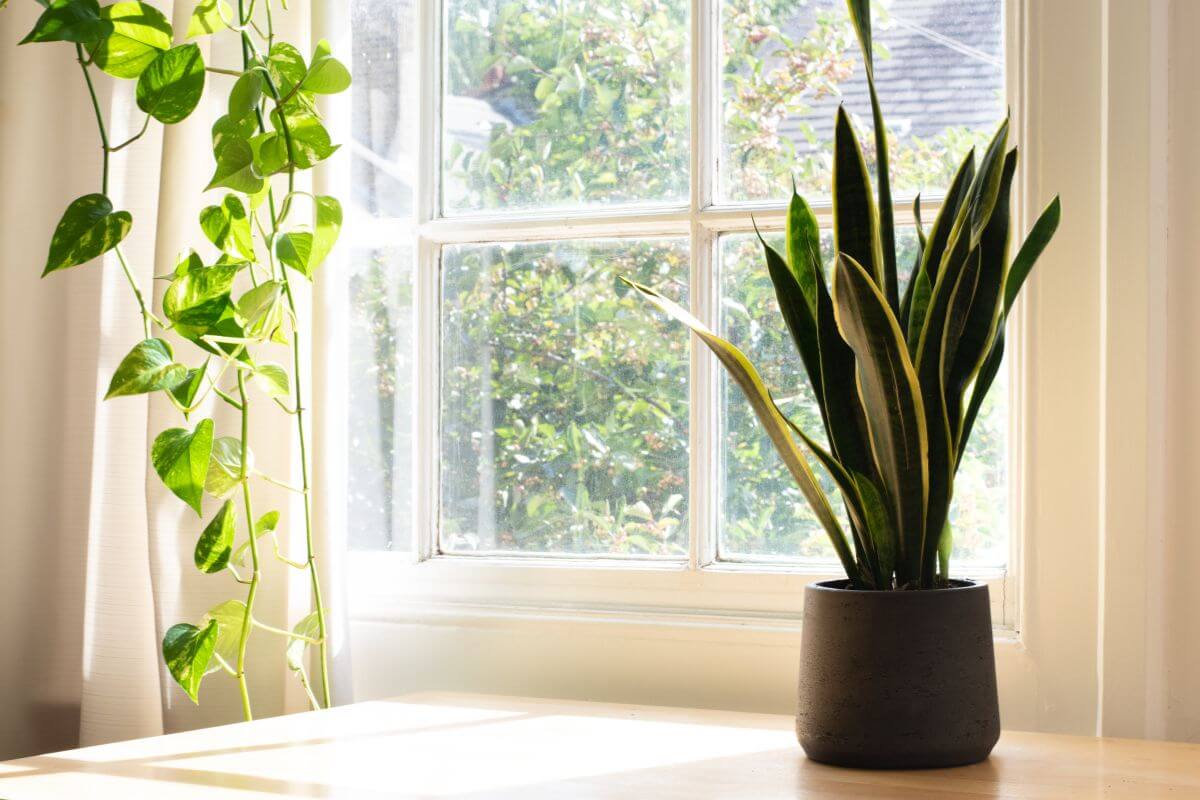
The Variegated Sansevieria, also known as the Snake Plant, is great at purifying indoor air. It removes pollutants like formaldehyde, xylene, and nitrogen oxides. NASA’s Clean Air Study even highlighted its effectiveness.
Snake Plants produce oxygen at night. This makes them perfect for bedrooms because they improve air quality around the clock. They are very low maintenance. They thrive in low light and need infrequent watering. This makes them ideal if you’re a beginner or have a busy schedule.
Snake Plants are drought-resistant. They can survive periods without water, so they are perfect for frequent travelers. The variegated variety has striking yellow-edged leaves that improve indoor decor beautifully.
11. Spider Plant (Chlorophytum comosum)
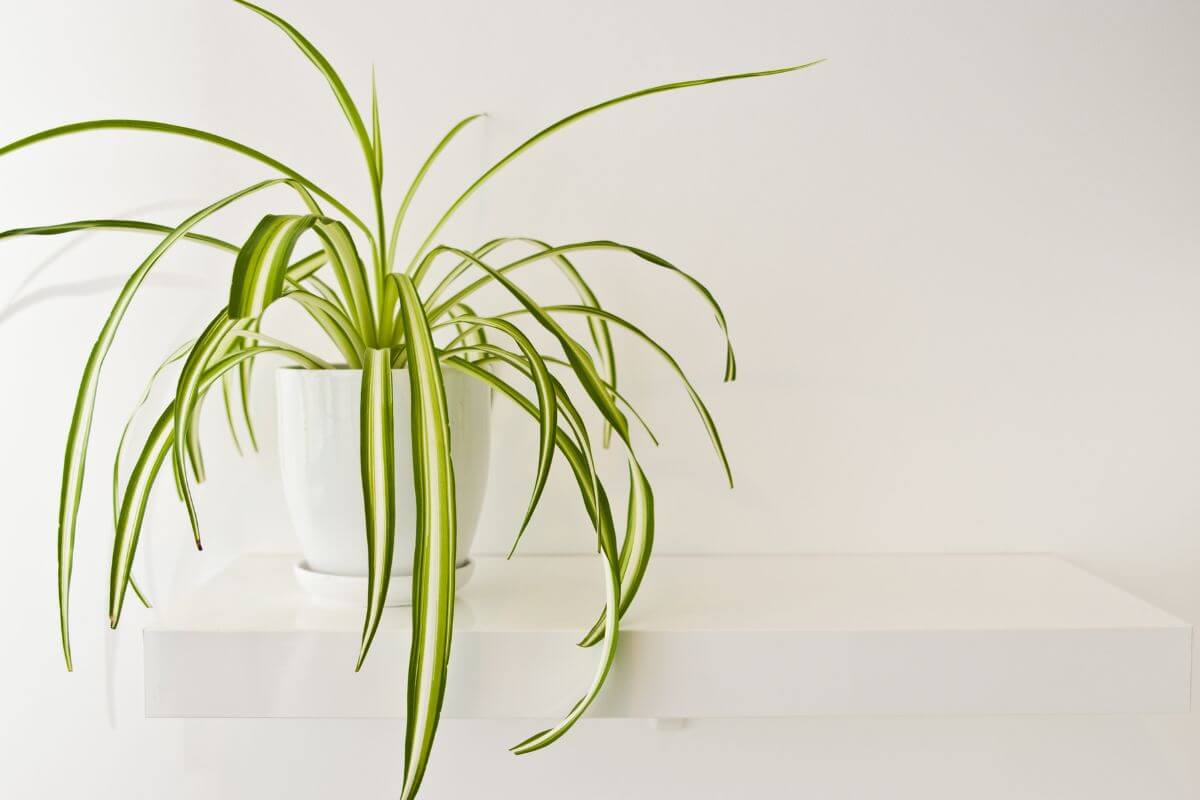
The Spider Plant is known as one of the best plants for purifying the air. NASA’s Clean Air Study found it can remove pollutants like formaldehyde, xylene, and carbon monoxide from indoor spaces.
Spider plants are very easy to care for. They are perfect for beginners or those without a green thumb. They are also safe for pets because they are not toxic to cats and dogs.
These plants grow quickly and are easy to propagate. They produce “spiderettes” or baby plants that you can replant from the parent plant.
12. Lavender (Lavandula)
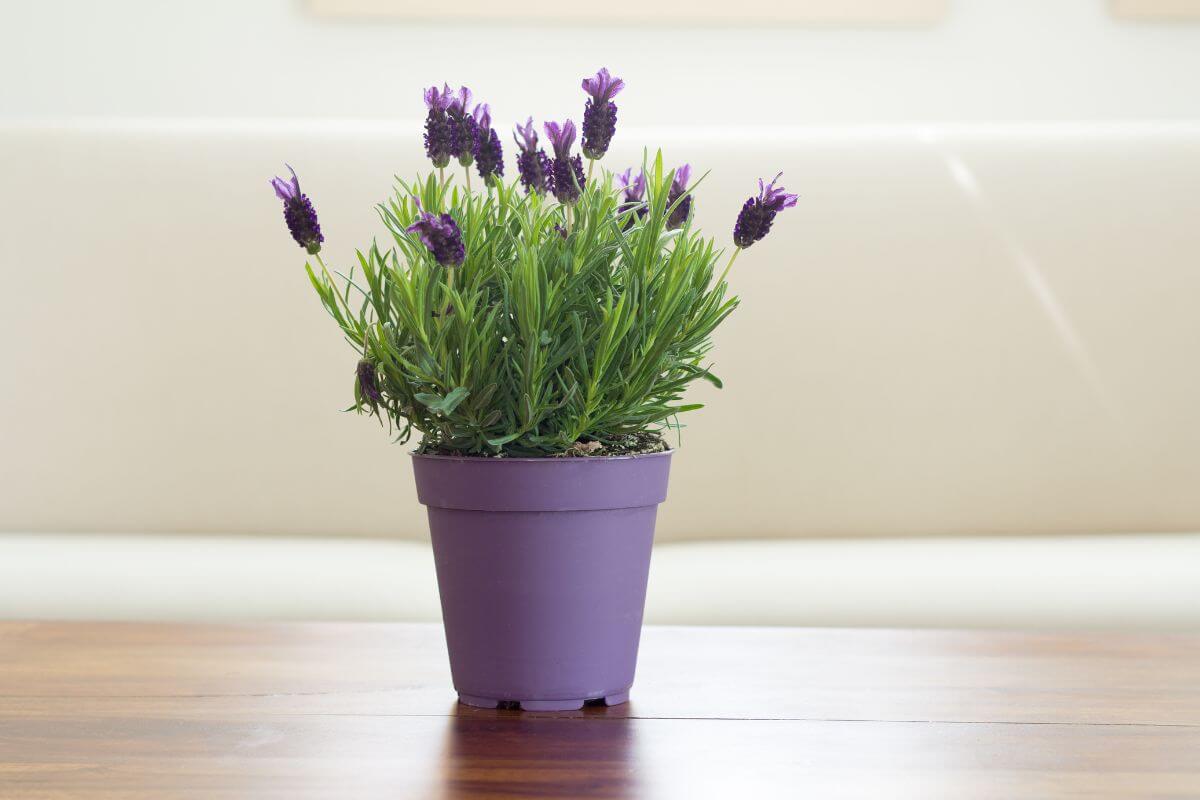
Lavender is a great plant for cleaning the air. It lowers indoor carbon dioxide and gets rid of bad smells. The scent helps you relax and feel less stressed. It also keeps bugs away because of its strong smell.
You can grow lavender inside or outside. It looks nice with its purple flowers and silvery-green leaves. This makes it a favorite for brightening up homes and gardens.
13. Lady Palm (Rhapis excelsa)
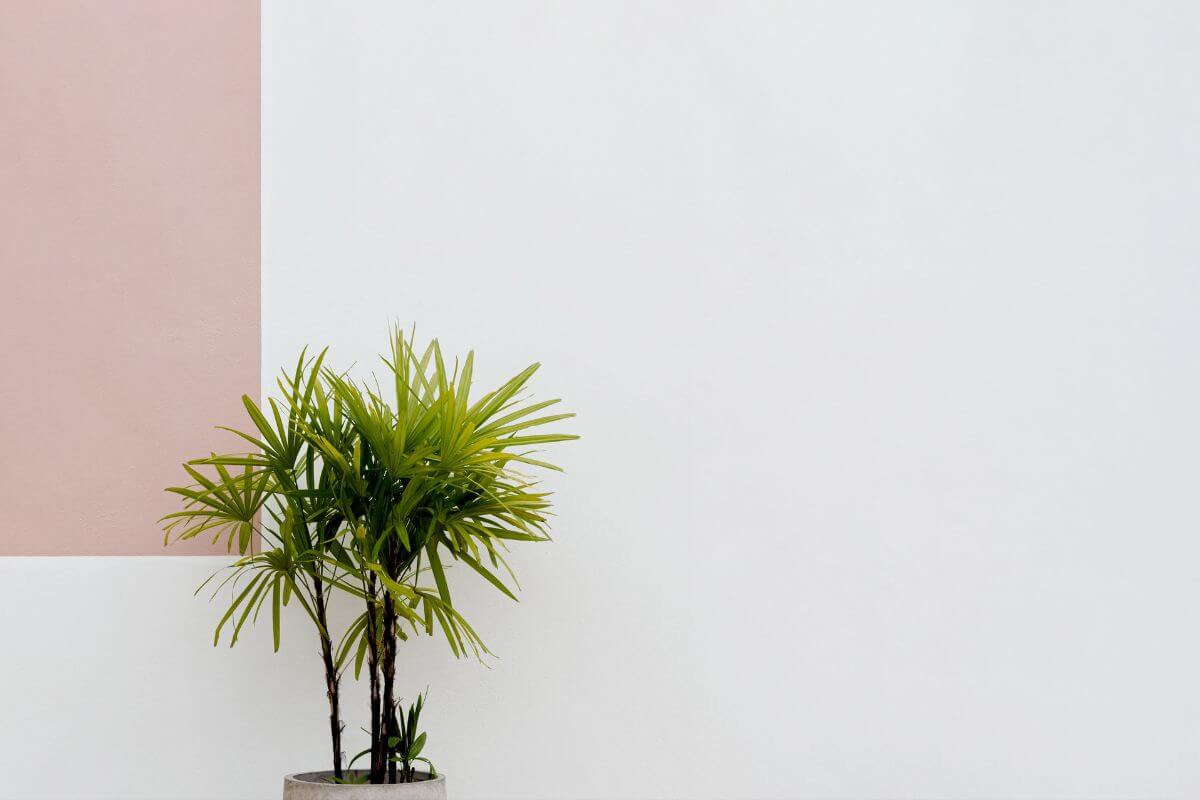
The Lady Palm is a top choice for air purification. It removes benzene, formaldehyde, trichloroethylene, xylene, toluene, and ammonia. NASA’s Clean Air Study confirms this.
This plant is easy to care for. It thrives in low light and handles drought well. It’s also resilient against many health issues. This makes it great for beginners and busy people. Lady Palms adapt to both indoor and outdoor settings. They do best in shady areas.
Their beauty comes from delicate, fan-shaped leaves and bamboo-like stalks. This gives any space a tropical feel. They are also cold-hardy to Zone 8b. They can withstand temperatures down to the mid-twenties Fahrenheit without damage.
- Learn more about How To Grow Lady Palm
14. Areca Palm (Dypsis lutescens)
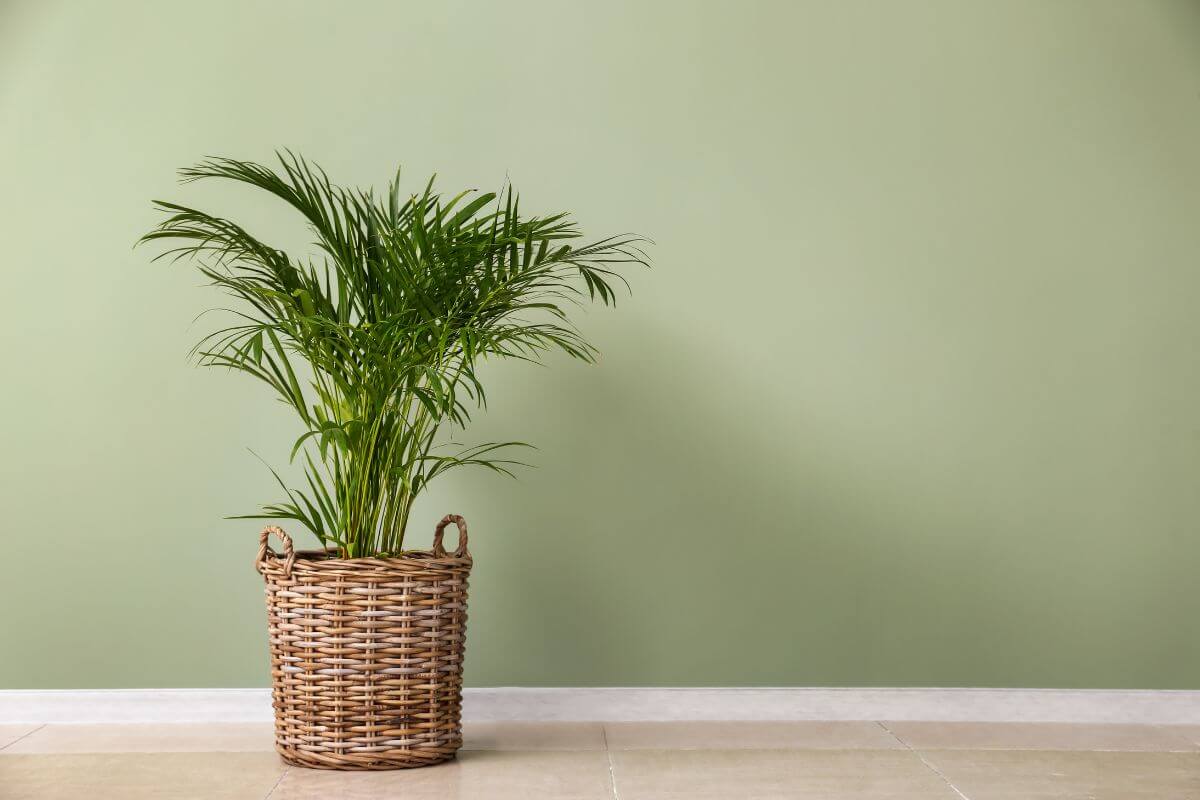
Areca palms are great for indoor spaces. They clean the air by removing formaldehyde, xylene, and toluene. NASA’s Clean Air Study highlights their air-purifying abilities.
They also humidify the air because they have a high transpiration rate. This helps with dry skin and respiratory issues. Areca palms produce oxygen too, which improves air quality. Plus, their elegant fronds add a tropical charm to any room.
These palms are non-toxic, so they’re safe for both pets and humans. They thrive in bright, indirect light and adapt well to various indoor environments. This makes them a favorite for those seeking beauty and functionality in indoor gardening.
15. Split-Leaf Philodendron or Tree Philodendron (Philodendron selloum or Thaumatophyllum bipinnatifidum)
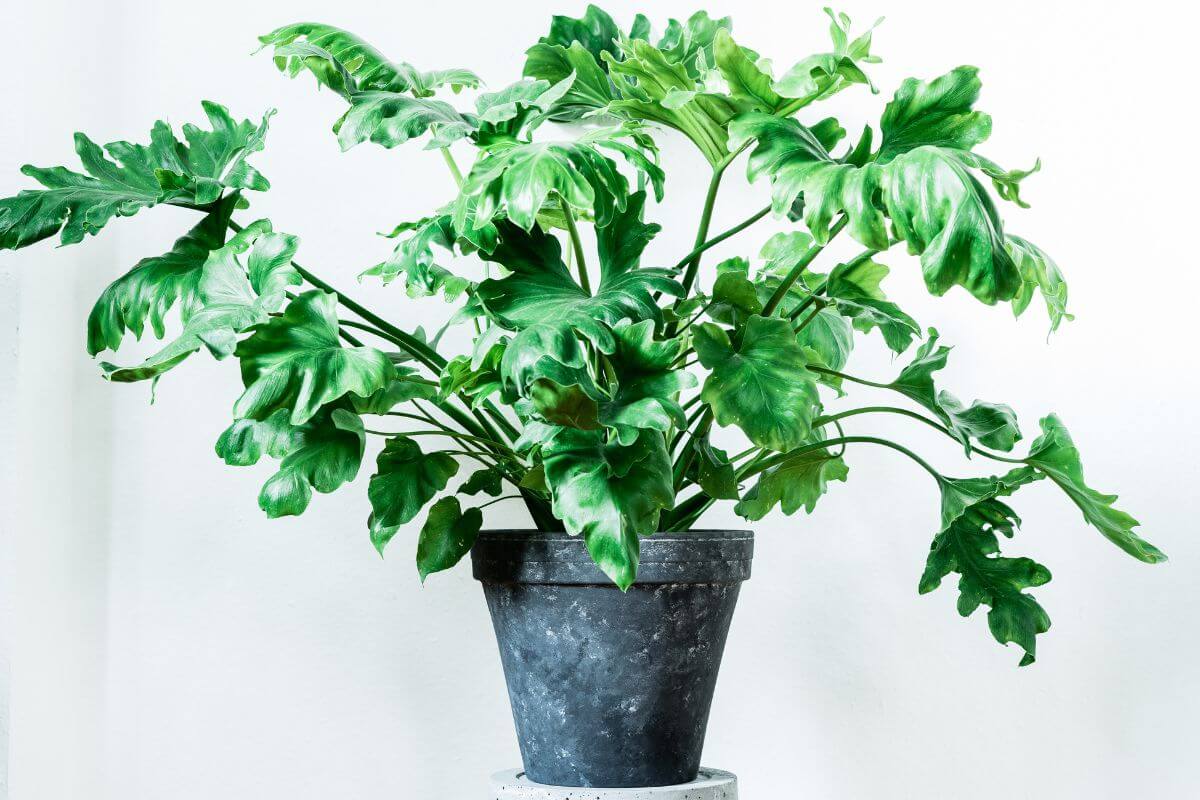
The Split-Leaf Philodendron is great for cleaning the air in your home. It removes formaldehyde from household items.
Its large, deeply lobed leaves provide a lot of surface area for air purification and oxygen production. This plant is low maintenance and can adapt to different light conditions. Its dramatic tropical foliage adds a bold, jungle-like feel to your indoor space. You can manage its size with regular pruning.
16. Rosemary (Rosmarinus officianalis)
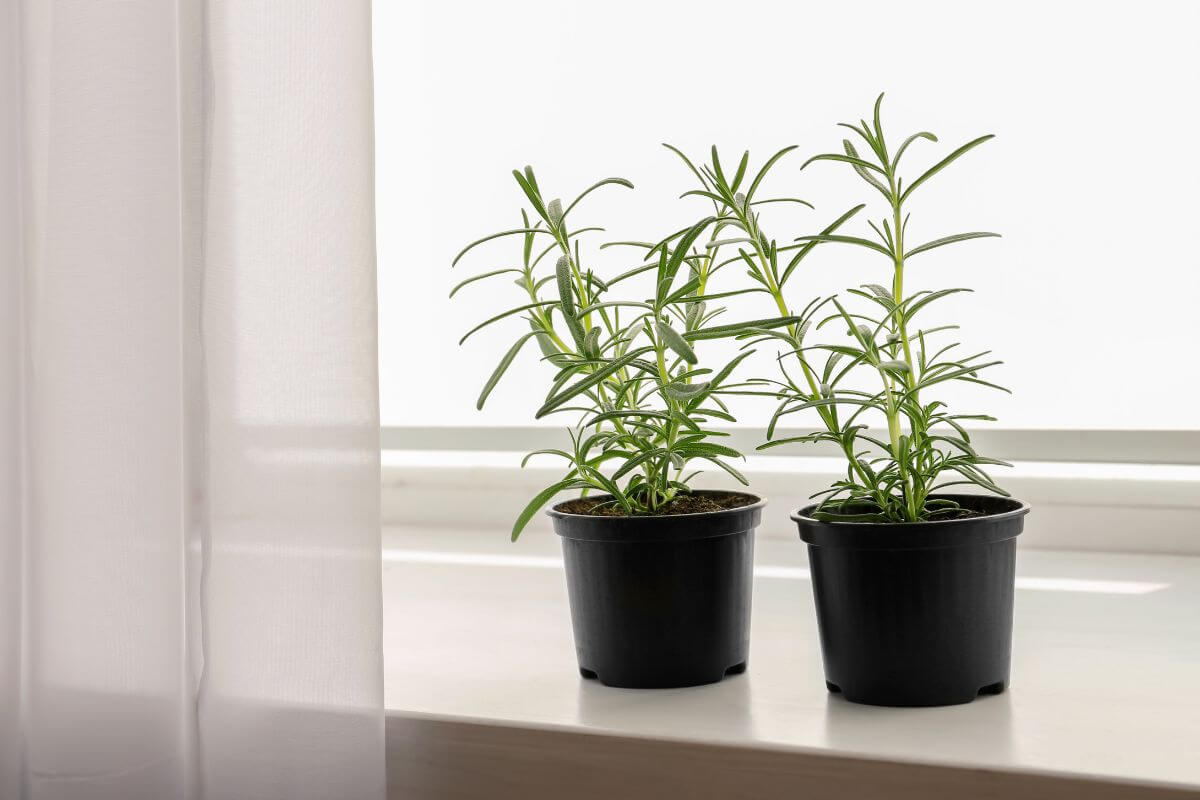
Rosemary is a great herb to grow indoors. It helps clean the air by absorbing carbon dioxide and releasing oxygen. Its fresh scent can lift your mood and reduce stress. Plus, it gets rid of bad smells in your home.
Rosemary also has natural antimicrobial properties. This means it can reduce bacteria and fungi in the air. It’s easy to care for because it doesn’t need much water or sunlight. This makes it perfect if you’re busy or new to gardening.
The strong smell of rosemary keeps insects away. This can help you avoid using chemical pesticides indoors. Rosemary is not just for cooking. It also helps improve your indoor environment and boosts your health and well-being.
What Causes Indoor Air Pollution?
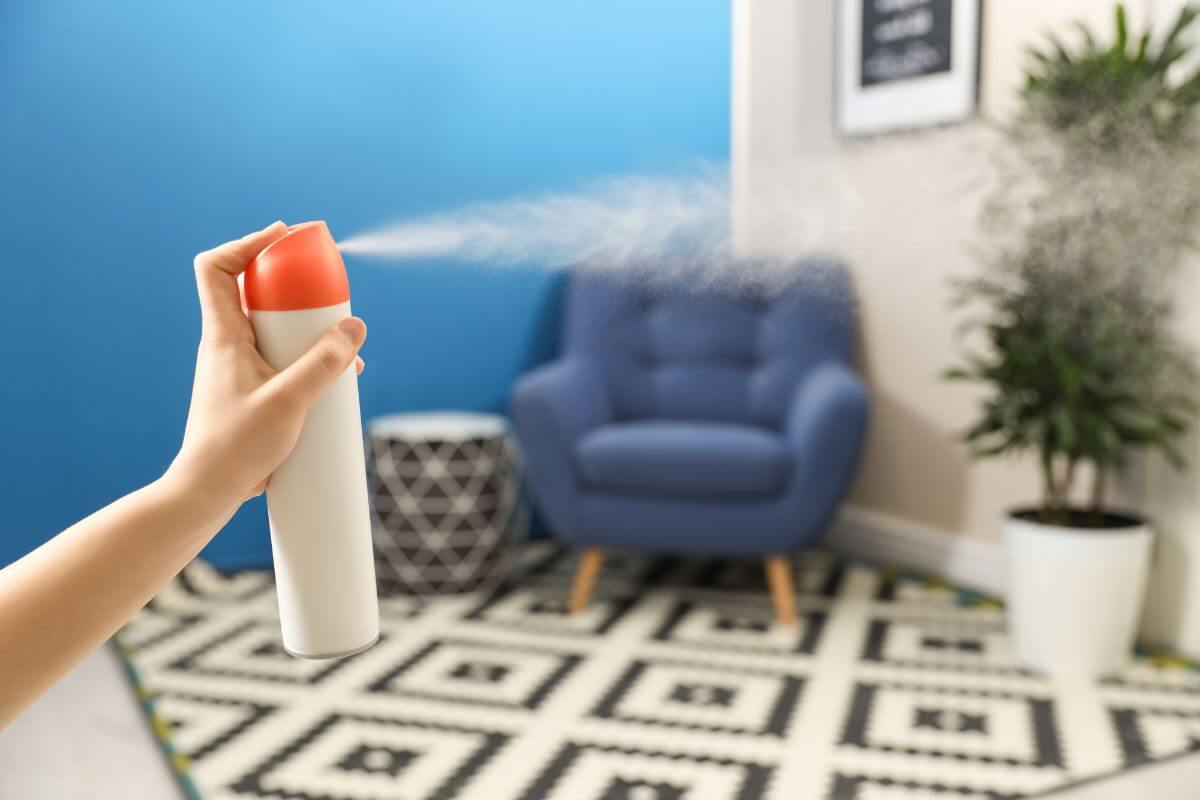
Indoor air pollution comes from many sources and can create harmful conditions in homes and buildings:
- Burning Fuels – Burning wood, coal, or dung for cooking and heating releases pollutants like carbon monoxide and particulate matter. Tobacco smoke and fuel-burning appliances do the same.
- Building Materials – Paints, varnishes, carpets, and construction materials emit volatile organic compounds (VOCs). Older buildings may have asbestos, which also pollutes indoor air.
- Household Products – Cleaning agents, disinfectants, air fresheners, scented products, and personal care items release chemicals into the air, affecting indoor air quality.
- Biological Contaminants – Mold and mildew in damp areas, pet dander, dust mites, and bacteria or viruses can significantly impact indoor air quality.
- Outdoor Pollutants – Vehicle emissions and industrial pollutants can enter through open doors, windows, and ventilation systems. Radon gas from the ground is another concern.
- Poor Ventilation – Inadequate air circulation leads to the buildup of indoor pollutants, worsening air quality.
- Human Activities – Cooking with gas stoves and using certain appliances can release pollutants like nitrogen dioxide and particulate matter.
- Formaldehyde and Carbon Monoxide – Formaldehyde, found in pressed wood products and insulation, and carbon monoxide from malfunctioning fuel-burning appliances or poor ventilation, are significant indoor air pollutants.
Continuing indoor air pollution can lead to Sick Building Syndrome (SBS), causing symptoms like headaches, inflammation, soreness, fatigue, and irritability.
The best solutions are to use eco-friendly products, ventilate well, and add a houseplant or two. Houseplants can bring health benefits to you and those around them.
How Do Plants Purify the Air?
Plants are great for improving indoor air quality in many ways:
- Oxygen Production – Plants take in carbon dioxide and give off oxygen during photosynthesis. This boosts the air quality.
- Pollutant Absorption – They can soak up harmful pollutants like benzene, formaldehyde, and trichloroethylene through their leaves and roots.
- Root and Soil Microorganisms – NASA found that plant roots and soil microorganisms are very good at removing air pollutants. The root zone is especially efficient.
- Humidity Regulation – Plants release water vapor through their leaves. This helps control humidity and cuts down on airborne contaminants.
- Microbial Action – Microorganisms in plants, especially in the root zone, break down and neutralize air pollutants.
NASA’s Clean Air Study in 1989 identified several plants as effective natural air purifiers. Researchers also developed ways to boost plants’ air-cleaning abilities. They used activated carbon around plant roots and improved airflow through the root zone with fans.
Best Air Purifying Houseplants Final Thoughts
Having indoor plants offers many benefits. They clean the air, reduce stress, boost moods, increase productivity, lower blood pressure, help you sleep better, and add beauty all year.
If you’re new to houseplants, you might want ornamental plants to make your home look nice. Why not choose air-cleaning indoor plants that also remove toxins?
Some great options include Aloe vera, Boston Ferns, Lady Palms, Peace Lilies, Lavanders, and Areca Palms. These plants not only look good but also improve the air quality in your home.
Air Purifying Houseplant FAQs
1. What Houseplants Are Best for Cleaning the Air?
According to the NASA study, the Boston Fern is one of the best, although it is not the easiest plant to grow indoors. The Golden Pothos Plant is also highly recommended because it is an easy-to-grow houseplant.
2. Which Plant Purifies the Air the Most?
Rather than purify, think about which plants produce the most oxygen, and especially those that can do so around the clock. The Aloe Vera and the Snake Plant are two houseplants that work through the night to keep the oxygen flowing.
3. How Many Plants Are Needed to Purify the Air in a Room?
The lead scientist on NASA’s study, reports “it’s impossible to guess how many plants might be needed to clean a room of contaminants.” But he suggests two “good-sized” plants for one hundred square feet of space indoors.
4. What Air Purifying Plants Are Safe for Cats?
The Spider Plant is a good choice according to the American Society for the Prevention of Cruelty to Animals. The spider plant is non-toxic for cats and dogs. Other pet-friendly houseplants are the Boston Fern, the Bromeliad, and the Rubber plant are all friendly to our feline family members.
5. What Air Purifying Plants Are Safe for Dogs?
The same non-toxic air-purifying plants for cats are also non-toxic for dogs. So, the Spider plant, Boston Fern, Bromeliad, and rubber plant will purify your air while keeping your dog safe from harm.
Other articles to learn more about houseplants:
















